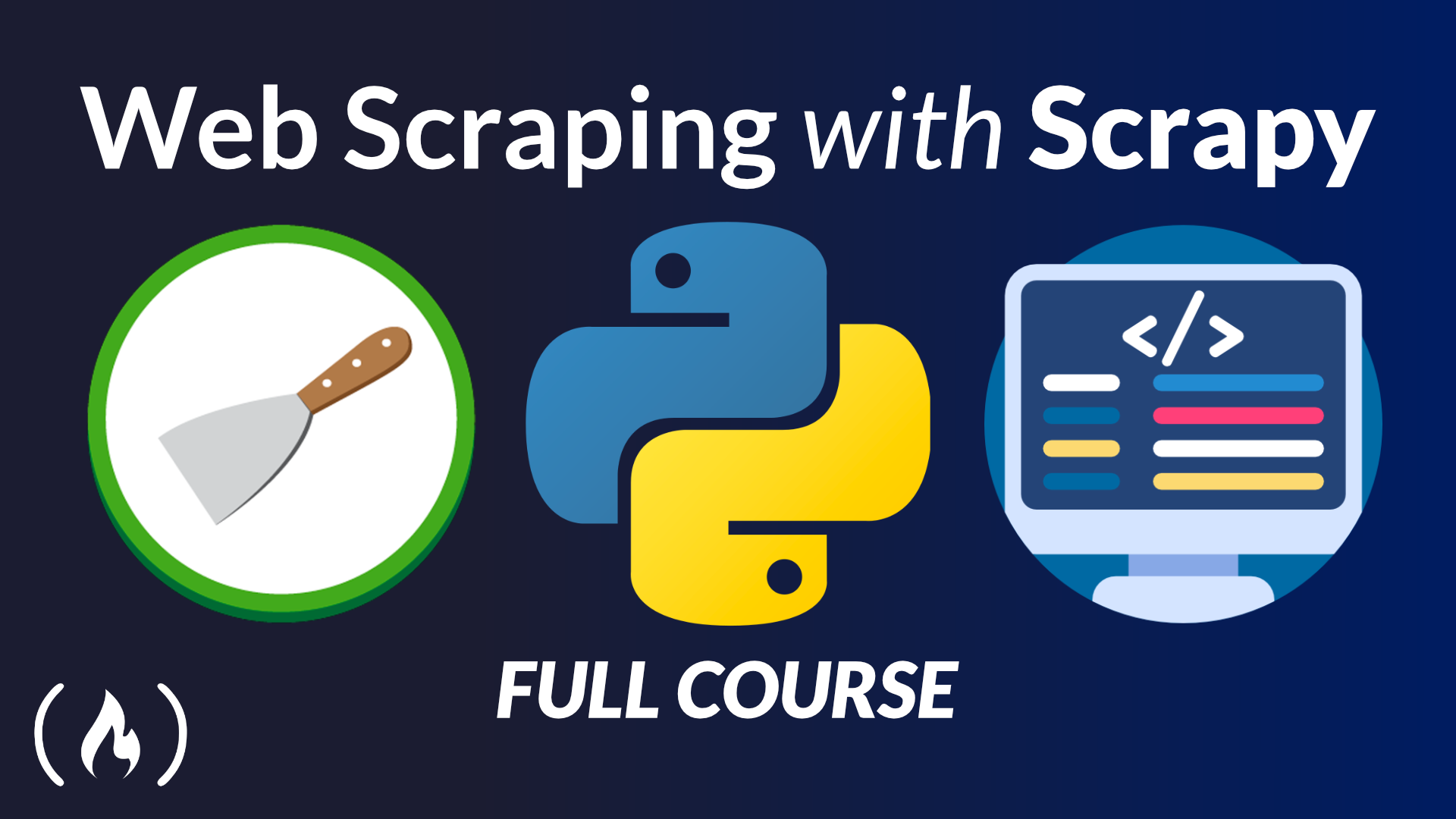Are you tired of manually collecting data from websites? Have you ever wished you could automate the process and gather massive amounts of data in a fraction of the time?
We just published a course on the freeCodeCamp.org YouTube channel that will teach you how to scrape websites with Python using Scrapy.
Joe Kearney developed this course. He is a full stack developer and an expert in web scraping.
This comprehensive video course covers everything you need to know to get started with web scraping using Scrapy. You'll learn how to create your first Scrapy spider, crawl through websites and scrape data from each page, clean data with Items and Item Pipelines, and save data to CSV files, MySQL and Postgres databases. Additionally, you'll discover how to use fake user-agents and headers to avoid getting blocked, and how to use proxies to scale up your web scraping efforts without getting banned.
But that's not all - this Scrapy beginners course goes beyond the basics and also teaches you how to deploy your scraper to the cloud and schedule it to run periodically. You'll learn how to use Scrapyd, ScrapeOps, and Scrapy Cloud to run your spiders in the cloud, making it easier to scale up your scraping efforts and automate your data extraction.
The Scrapy Beginners Course is broken down into 13 easy-to-follow parts that cover:
- An introduction to Scrapy and an overview of the course content.
- Setting up a virtual environment and installing Scrapy.
- Creating a new Scrapy project.
- Building your first Scrapy spider to crawl and extract data.
- Developing a discovery and extraction spider for more complex scraping tasks.
- Cleaning data with Items and Item Pipelines.
- Saving extracted data to CSV files, MySQL, and Postgres databases.
- Using fake user-agents and browser headers to avoid getting blocked by websites.
- Scaling up your web scraping with rotating proxies and proxy APIs.
- Deploying your spiders to the cloud using Scrapyd.
- Running spiders in the cloud with ScrapeOps.
- Scheduling spiders to run periodically in the cloud using Scrapy Cloud.
- Wrapping up the course and discussing next steps for further mastery.
By the end of this course, you'll have a solid foundation in Python Scrapy and be ready to tackle even the most challenging web scraping projects. Whether you're a data scientist, marketer, or developer, this course will equip you with the skills needed to harness the full potential of web data.
Watch the full course on the freeCodeCamp.org YouTube channel (5-hour watch).

